
Extreme Living: Scientists at the End of the Earth
Research Station
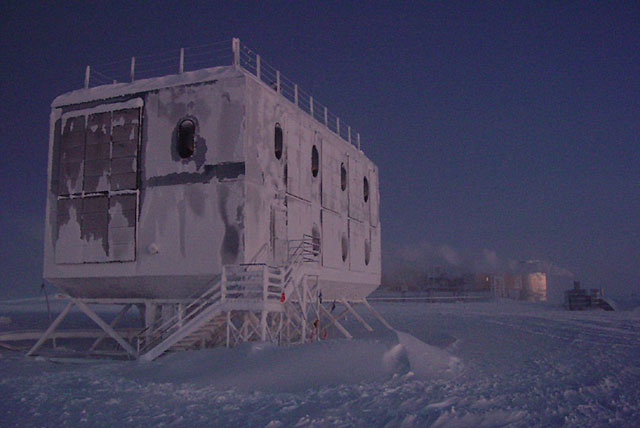
An elevated dorm at NSF's Amundsen-Scott South Pole Station is shown with a new elevated station in the background. The photo was taken on Sept. 9, 2005. The Pole is currently experiencing a period known as civil twilight; the sun will not rise above the horizon until late September.
Open House
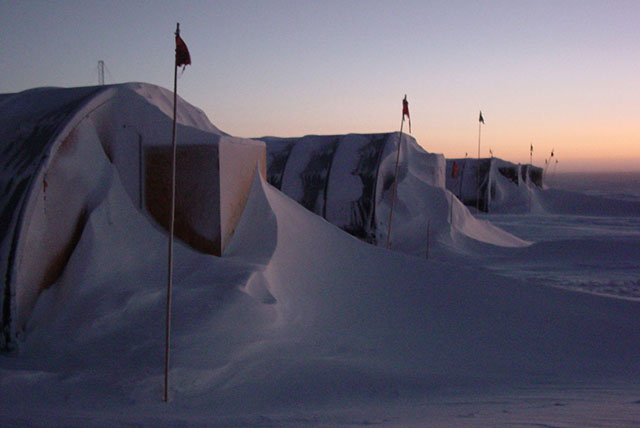
Unoccupied Jamesway huts wait for the summer station population to arrive in late October.
Stalled
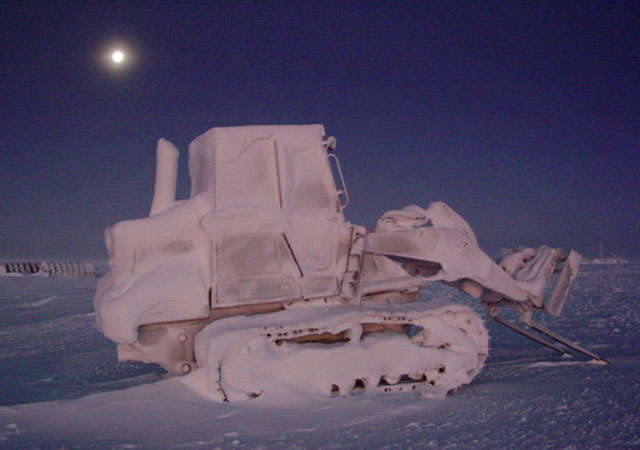
A frozen loader waits for the return of the sun at NSF's Amundsen-Scott South Pole Station.
Severe Weather
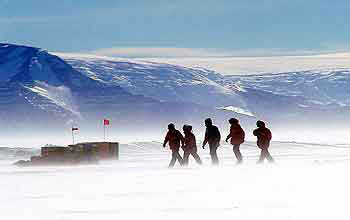
A research team is shown braving the harsh conditions in the Antarctic interior on a mountaintop roughly 3,900 meters (13,000 feet) high, near the Beardmore Glacier.
Beneath the Surface
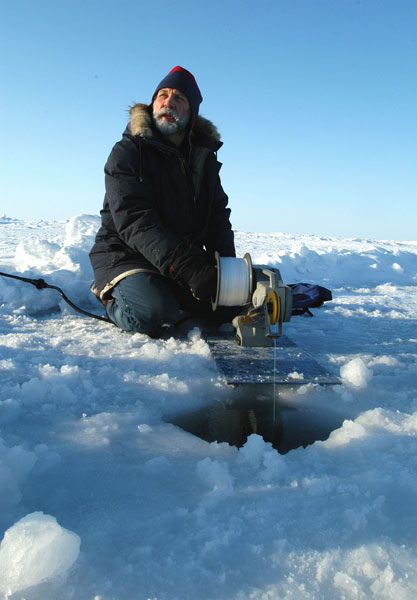
Principal Investigator James Morison, of the University of Washington, takes water samples from the Arctic Ocean near the North Pole. The sampling is one of several measurements taken annually as part of the National Science Foundation's North Pole Environmental Observatory project.
Heavy Machinery
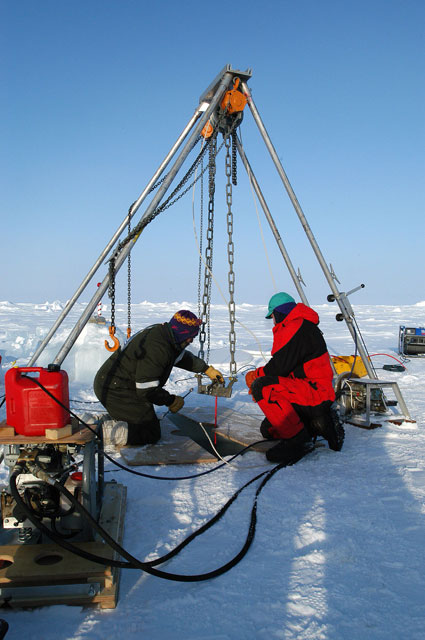
A winch at the National Science Foundation's North Pole Environmental Observatory is used to retrieve a mooring that has been collecting oceanographic data from the Arctic Ocean for a year.
Collecting Samples
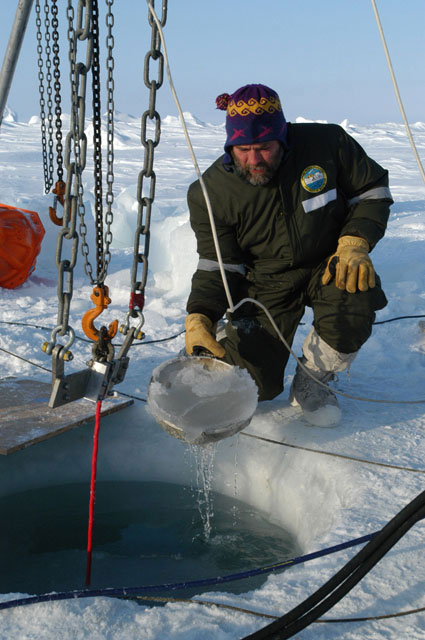
James Osse, a University of Washington field engineer, skims ice from the surface of a hole used to retrieve a deep-sea mooring at the National Science Foundation's North Pole Environmental Observatory.
Sign up for the Live Science daily newsletter now
Get the world’s most fascinating discoveries delivered straight to your inbox.
Beauty of the Sun
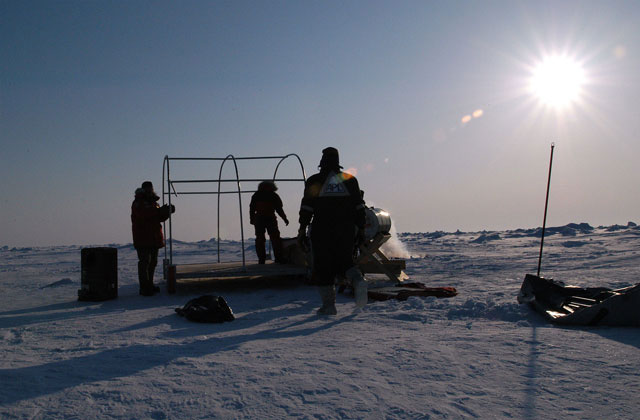
Personnel from the University of Washington break down the mooring camp erected as part of the National Science Foundation's North Pole Environmental Observatory.
March of the Penguins
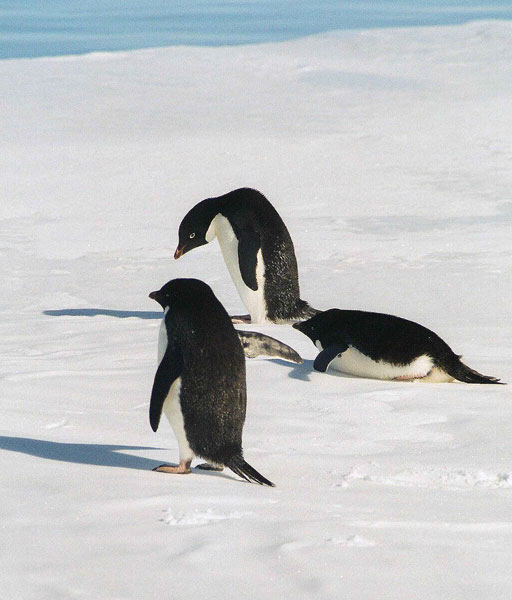
Adelie penguins are wandering on the ice of McMurdo Sound.
Hi-tech
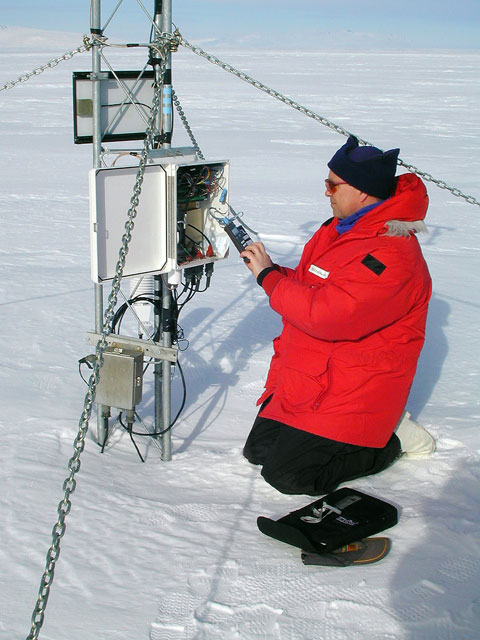
Douglas MacAyeal, a National Science Foundation-funded researcher from the University of Chicago, uploads new instructions to an automated weather station on iceberg B-15A. MacAyeal landed on the immense iceberg, perhaps for the last time, in January 2005 to service weather stations he had placed on the iceberg a year ago.
Master Plan
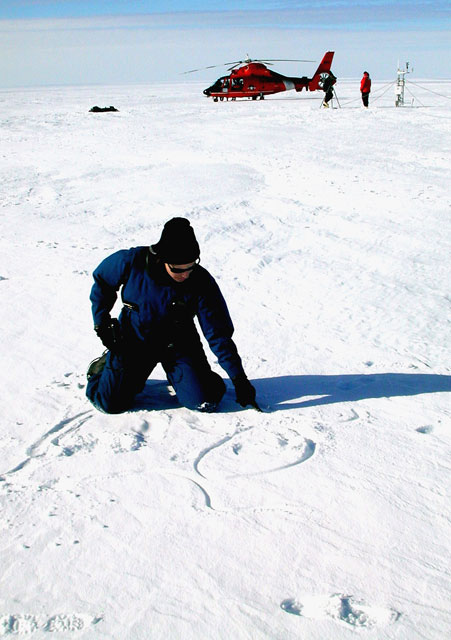
U.S. Coast Guard pilot Sidonie Bosin sketches out a proposed route for an informal photo reconnaissance of iceberg B-15.










